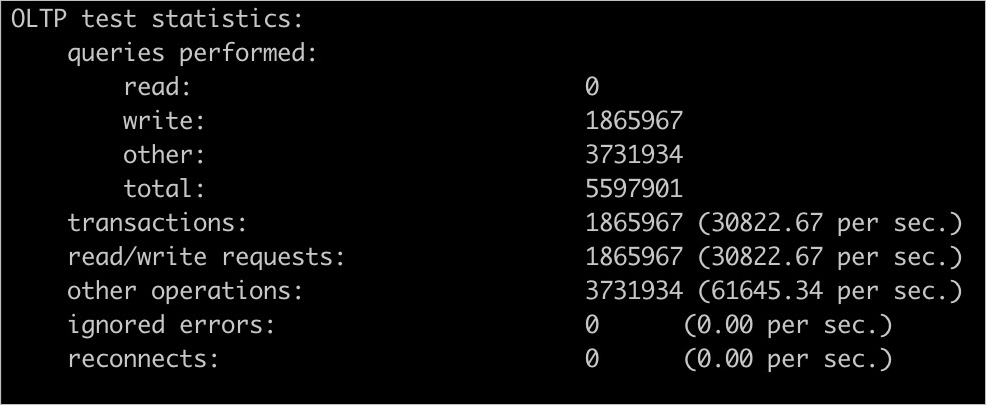This topic describes how to test and analyze the performance of an ApsaraDB RDS for MySQL instance in updating hot data in a single row of a table.
Test environment
In this test, an RDS instance that runs RDS High-availability Edition and uses the rds.mysql.st.v52 instance type and an RDS instance that runs RDS Enterprise Edition and uses the mysql.st.12xlarge.25 instance type are used.
Database engine and version: MySQL 5.7
Specifications: 90 CPU cores, 720 GB of memory (dedicated host instance family)
RDS editions: RDS High-availability Edition and RDS Enterprise Edition
Storage type: local disk
Template: high-performance parameter template
Test data
The table that is used for the test contains 100 rows. The following code snippet describes the table schema:
CREATE TABLE `sbtest1`
(
`id` INT(10) UNSIGNED NOT NULL AUTO_INCREMENT
,`k` INT(10) UNSIGNED NOT NULL DEFAULT '0'
,`c` CHAR(120) NOT NULL DEFAULT ''
,`pad` CHAR(60) NOT NULL DEFAULT ''
,PRIMARY KEY (`id`)
,KEY `k_1` (`k`)
)
ENGINE=InnoDB AUTO_INCREMENT=101 DEFAULT
CHARSET=utf8 MAX_ROWS=1000000Test script
Execute the following SQL statement to perform concurrent updates on the row whose ID is 100:
UPDATE sbtest1 SET k=k+1 WHERE id=100The following Lua script is used for the test:
pathtest = string.match(test,"(.*/)")
if pathtest then
dofile(pathtest .."common.lua")
else
require("common")
end
function thread_init(thread_id)
set_vars()
end
function event(thread_id)
local table_name
table_name ="sbtest".. sb_rand_uniform(1, oltp_tables_count)
rs = db_query("begin")
rs = db_query("update /*+commit_on_success rollback_on_fail target_affect_row(1) */ sbtest1 SET k=k+1 WHERE id=100")
rs =db_query("commit")
endTest results
Instance type | Maximum TPS on the single row |
RDS High-availability Edition | 12,000 |
RDS Enterprise Edition | 31,000 |
Figure 1. Test results for RDS Enterprise Edition